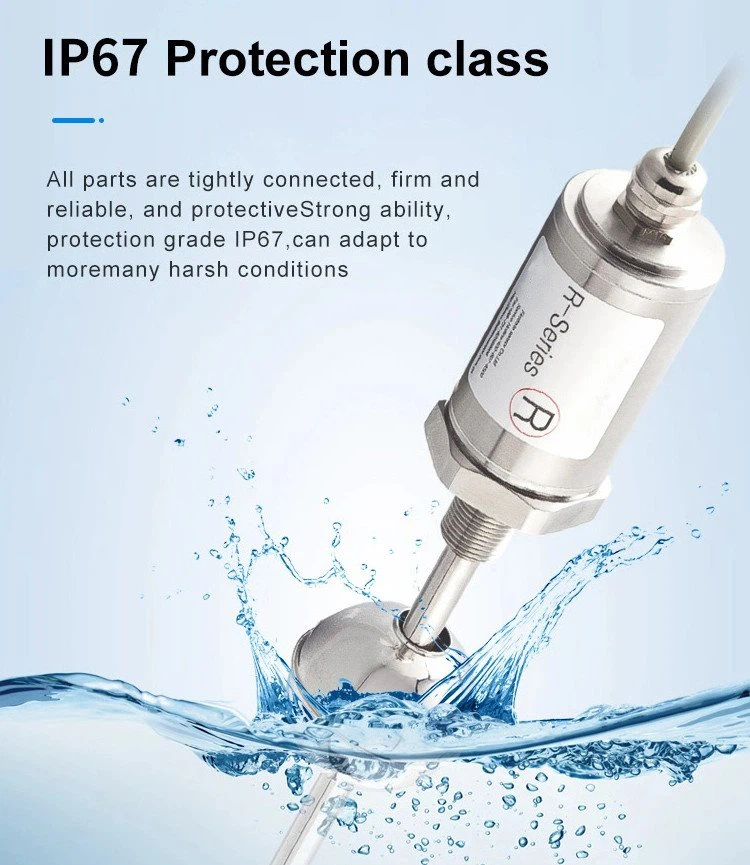

Sensors world A liquid magnetostrictive level sensor is a type of sensor used to accurately measure the level of liquid in a container, tank, or vessel. It utilizes the magnetostrictive principle to determine the liquid level by measuring the time it takes for a magnetic wave to travel along a waveguide within the sensor and reflect back from the liquid surface. These sensors are widely used in various industries for precise liquid level monitoring and control. .
Waveguide and Float: The liquid magnetostrictive level sensor consists of a waveguide tube that extends into the liquid-filled container. Inside the waveguide, there is a float that contains a magnet.
Magnetostrictive Effect: When an electrical current is applied to a magnetostrictive wire within the waveguide, it generates a magnetic field. This magnetic field interacts with the magnet in the float, causing the magnetostrictive wire to change shape due to the magnetostrictive effect.
Magnetic Pulse Generation: The electrical current creates a pulse of magnetic energy that travels along the waveguide at a known speed.
High Accuracy: Magnetostrictive level sensors offer high accuracy and precision in liquid level measurement.
Non-Contact: These sensors operate without direct contact with the liquid, reducing the risk of contamination or mechanical wear.
Versatility: They can be used to measure liquid levels in a wide range of liquids, including water, chemicals, oils, fuels, and more.


Oil and Gas: For monitoring liquid levels in storage tanks, oil wells, and pipelines.
Chemical Processing: In tanks and vessels containing various chemicals and fluids.
Water Treatment: In water reservoirs, tanks, and treatment facilities.
Food and Beverage: In tanks for liquid ingredients or finished products.
Pharmaceuticals: For monitoring liquid levels in processing and storage tanks.
